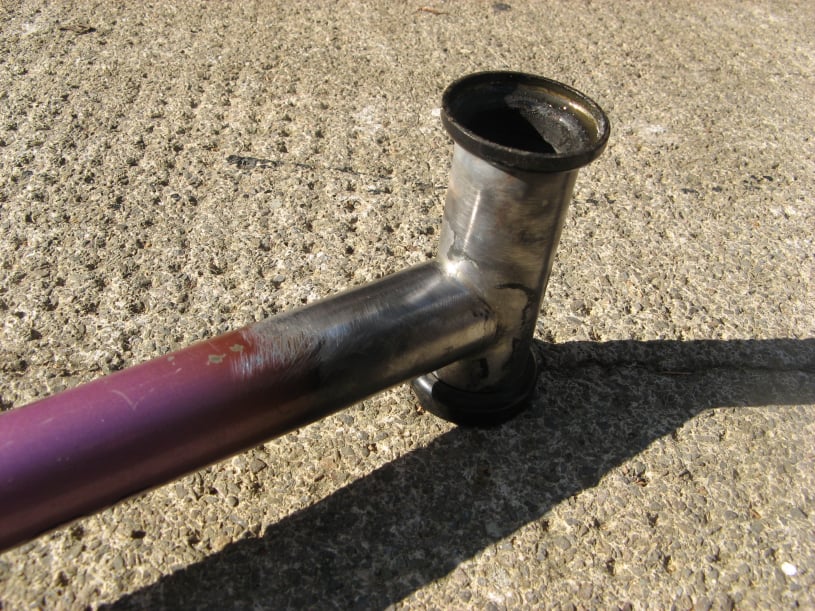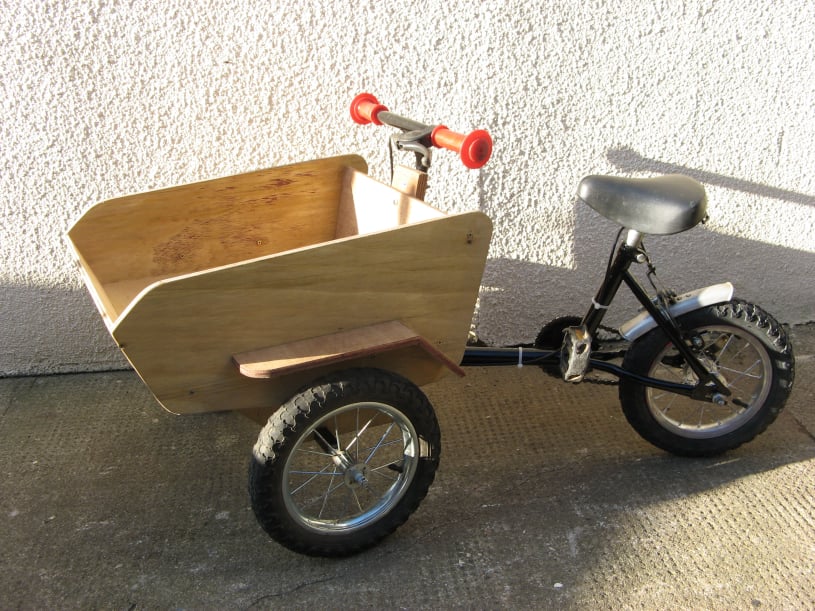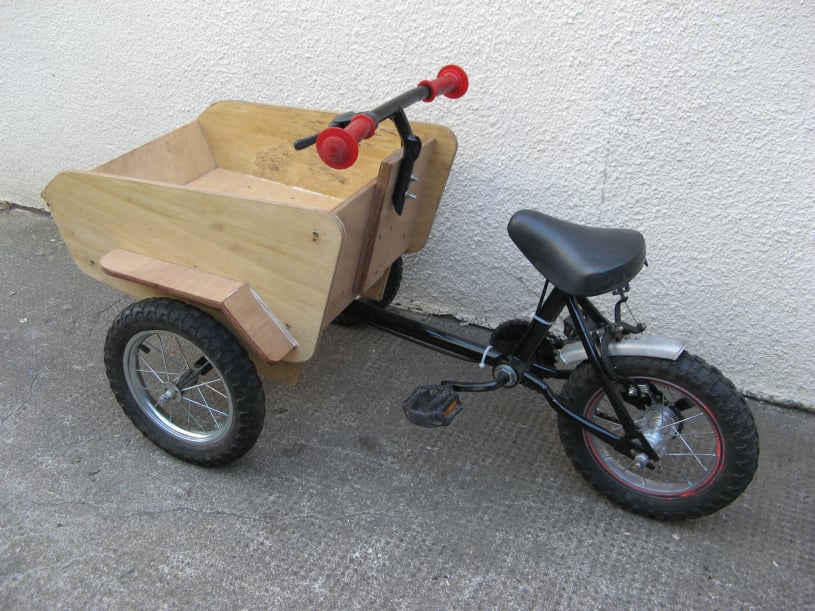
Cargo Trike
This project was a small tricycle based on a child's 12" wheeled bicycle but with a modified frame to make a tricycle with 2 wheels at the front.

This project was a small tricycle based on a child's 12" wheeled bicycle but with a modified frame to make a tricycle with 2 wheels at the front.

The donor bike was a small child's 2 wheeled bike from a junk shop. It had 12" wheels and a standard 2-triangle frame.
Some steel from the frame of an old ladies' bike was also used, this frame came from the local scrap yard.
The frame was cut at cross bar and the bottom bracket to leave the rear triangle of the frame intact.

A piece of frame tubing from the other bike was used to create the forward spar.
This photo shows the first joint being tested for strength.

Next the steering pivot was added. This was the original head-stock from the donor bike. Care was taken to ensure that both the cross bar and steering pivot were accurately aligned.
The length of the steering tube was also shortened slightly to give a lower profile to the whole steering mechanism, but it was only shortened within the length of thread available on the bike forks to avoid any need to extend this thread.

The front beam axle was made from some 20mm square tube, cut to a length of 400mm.
The front forks from the original bike were cut off as shown below, and slotted to take the beam axle. A steel pin was located through the brake mounting hole to secure things before brazing the assembly together.

Each end of the square tube had a piece of metal brazed into it which was tapped to take the front wheel axles. The axles on this particular bike were 3/8th inch x 32tpi which was a standard BCT (British Cycle Thread)

The front cargo deck was made from plywood.
The base was an 18mm piece of plywood which was drilled with a 25mm hole to locate on the top of the fork tube. The front edge was cut at 30º, and the rear at 10º. The width of the base was 400mm, less the thickness of the 2 sides.

Underneath the load deck two support ribs were added to not only distribute weight onto the axle but also to transfer steering forces from the handle bars to the front wheels. These were made from 12m plywood cut as shown.
The slots in the lower edge of the ribs were a tight fit on the axle. The height of the ribs was cut so that the top edge was level with the steering nut on the centre pivot.

The sides of the load deck were cut to a suitable profile and glued and screwed in place.

The handlebars from the donor bike were drilled to accept 2x 6mm bolts.
A reinforcing piece of plywood was screwed the to back panel of the cargo area to allow for vertical adjustment of the bars.

The bike was equip with a single rear brake. This was a standard caliper brake but the cable was routed via the front pivot so that the steering wasn't affected by the cable. The cable was secured to the bike frame using cable ties (zip-ties)



Website Software